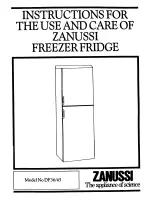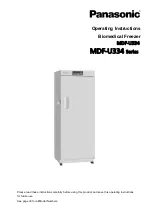
GB
16
• Avoid opening the door too often, especially when the weather is humid and warm. The
door should only be open for as short a time as possible.
•
Regularly check that the unit is adequately ventilated (i.e. there is adequate air
circulation behind the appliance).
• For domestic refrigerators and freezers in normal temperatures, set the temperature
control to a middle position.
•
Before filling the unit with foodstuffs, ensure that they have cooled to room temperature.
• Ice and frost coatings increase energy consumption. Defrost the refrigeration element
when the coating is 3 – 5 mm thick.
• If the unit has an external condenser on its rear, always keep the condenser free from
dust and other contaminants.
• Always follow the instructions given in the sections on unit placement and methods for
saving energy. If you do not, energy consumption will be far higher than necessary.
Important
1.
Position the freezer on a firm surface. To prevent vibration and noise, the freezer’s front
feet must be adjusted so that the freezer is level.
2. Select a well-ventilated space where the clearance around the freezer is at least 10 cm.
3. Do not position the freezer in direct sunlight or near heat sources such as a cooker or a
water heater.
Warning! This unit must be connected to an earthed power outlet.
Installation
Before plugging in the freezer for the first time, remove all packaging and clean the unit.
Dry with a soft cloth.
TEMPERATURE CONTROL
The temperature in the freezer is controlled via the temperature control inside the freezer.
To adjust the temperature in the freezer, turn the temperature control to higher or lower
values. The control has the markings “MIN”, “NOR”, “MAX” and “OFF” for the different
temperature settings. MIN is the highest temperature and MAX is the lowest. For normal
use, set the control to NOR. If NOR gives a too high or too low a temperature, set the
control to another position.
Use
















































